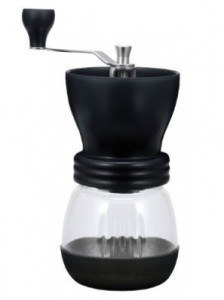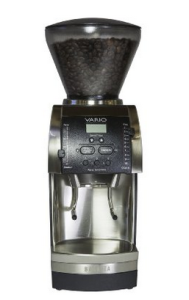Ceramic Vs. Steel Burr Grinders
by Bryan Albuquerque
Today we are going to talk about ceramic vs. steel coffee grinder burrs, and how they compare when it comes to their ability to grind beans, not to mention how those materials affect the flavor of our coffee overall.
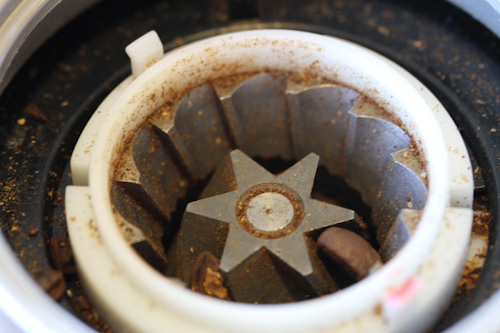
Ceramic Vs Steel Burrs – The Basics
First off, ceramic burrs run a bit cooler compared to steel burrs, or in other words, they don’t heat up as fast or retain heat as much as their metal counterparts.
Heat is an important factor when it comes to coffee grinder burrs, because any extra heat impacts your coffee’s flavor, since it burns off some oils present on the beans. This is generally frowned upon.
Following this reasoning, ceramic burrs might just have an edge over their counterparts (steel burrs), as these vital oils in our beans either being singed or cast out of the flavour profile completely is not a plus.

The rule of thumb here is that a cooler grind is always more desirable, which is why cheaper grinders are usually less powerful (they don’t have expensive engines, let’s say), and the burrs are cheaper, and they run hotter overall and this heat isn’t a good thing. Classic “hot mess” scenario.
We must also take into consideration the coffee grinder itself, because a good coffee grinder is going to be optimized to run at an ideal speed for the burrs that it does have, whether they be ceramic or steel.
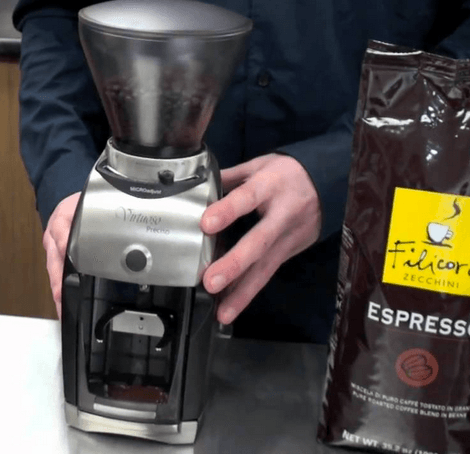
Some might say – “What about hand crank grinding?” Indeed, a slower more manual method that many prefer.
Hand crank coffee grinders are indeed much slower speed-wise when it comes to grinding, and their capacity and efficiency for grinding beans in any kind of appreciable quantity is not high.
Also, the users control over just how fine it can grind is limited, while compared to something that a coffee shop might use to grind beans, which can grind on the level of micro-adjustments heretofore unseen by the casual coffee fan.
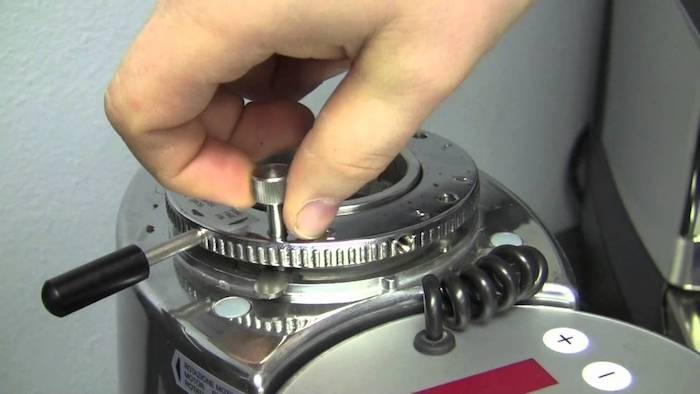
But, what the average hand crank grinder lacks in speed, they make up for in the fact that the grind is indeed cool, as in cooler temperatures do prevail here. So, we must tip our cap to them in that regard…
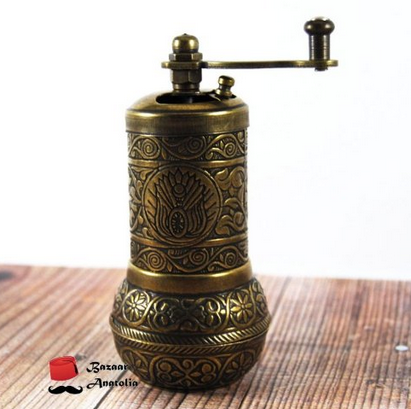
We must mention here that hand crank grinders, which are also used for spices and so are often tough little suckers, do not usually (if ever) possess ceramic burrs.
Ceramic burrs are found in both large and small coffee grinders, and it must be said that the reputation of such coffee grinders that do happen to have ceramic burrs is usually overwhelmingly positive.
In other words, we don’t come across too many grinders, large or small, that have ceramic burrs and don’t have great reviews. Most of them do.
A Practical Example – The Kyocera Coffee Grinder
The Kyocera ceramic burr coffee grinder is a good example of a smaller grinder that give you reasonable control over the fineness of the grind.
You can quickly adjust the distance between burrs by simply adjusting the screw located at the top.
The Kyocera grinder is a nice little grinder, and not unlike many other grinders of this kind, such as the Hario Mini, for instance.
If you are the kind of person who likes exploring different brewing methods, or if you are just looking for that perfect classic coffee brew, then it’s beneficial to have the freedom to change up the levels of fineness that you may be seeking.
A grinder like this one is not a bad choice, and the ceramic burrs do help.
That said, with a smaller grinder such as this, you will be limited in speed and quantity of grinds, which may be a deal breaker for some, which is why some people must avoid smaller manual grinders, as nicely made as some of them are.
Also, you’ll want to avoid coffee grinders that are too ornamental, which are of the hand crank variety. Many of those grinders are made to look pretty, but not really do a great job at grinding. This is on a case by case basis, of course.
Ceramic Burrs – Flavour Profiles

Ceramic burr grinders have been found to produce a more “traditional” flavour profile.
Ceramic burrs are particularly good for coffees that are roasted for espresso. Note that most of these tests are specifically based on tasting espresso.
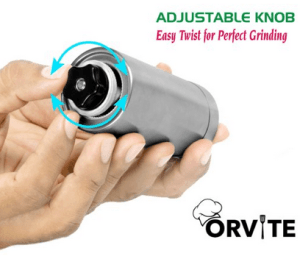
Compared to steel burrs, ceramic burrs produce cup flavors that are more complex.
The flavors certainly have more mouth and body feel. Remember, all this depends on your coffee beans you choose to begin with.
Steel Burrs – Flavor Profiles
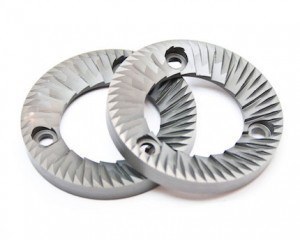
Steel burr grinders have been designed to produce less fines, and a particularly even particle distribution.
Steel burrs are great for batch, pour over, or home coffee brewers. They are perfect when it comes to preparing modern style espresso.
With steel burrs, you get espresso that tastes a little different, since it has extraordinarily small grind particles or lacks fines.
Steel burrs produce coffee grounds with a more uniform particle size, in comparison with ceramic burrs.
The resulting flavor profile is quite simple; it has a clean mouth feel.
You notice that steel burr grinders work better with single origin coffees. The results will be different if you opt for coffees roasted for espresso (espresso roast).
Sharpness
Ceramic burrs retain their sharpness for a longer time, as compared to steel burrs, however, ceramic burrs are not as sharp as steel burrs.
Cleaning
There is not much difference when it comes to cleaning ceramic and steel burr grinders.
You can clean a steel-burred Breville Smart Grinder the same way you’d to for ceramic burr Baratza Vario 886.
It’s All About Preference

We can’t tell you which one to choose ultimately – steel or ceramic. Both have certain advantages, and disadvantages.
You have to have an idea of the kinds of flavours you like, and the kinds of flavours you want.
According to recent taste tests, there is a thin boundary between those who are for ceramic and steel burrs.
The bottom line is, folks, you really need your taste buds to be awake and in the mood to process various flavours and sensations in order to gather information to determine what you like best.
Because, even though the title of this article is Ceramic Vs. Steel burrs, it’s not really a competition, and there can be no objective winner.
Espresso Vs. Non-Espresso Roasts
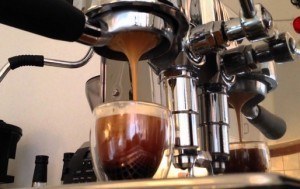
The biggest difference only comes when we consider espresso and non-espresso roasts.
Ceramic steel burrs work best with coffees roasted for espresso.
On the other hand, the flavor profile resulting from steel burrs is greatly improved when one uses non-espresso roasts.
Due Diligence In Coffee Taste Testing

We are not saying these tests are fool proof. Before coming to any conclusions, we have to know exactly what type of analysis was used.
Did the tests take into account all the factors that affect a cup of coffee’s taste? There are, of course, many.
Things like the freshness of the roast would be one major factor, the water is another thing.
A lot of factors come into play during taste tests. For credibility purposes, tasters should be blinded. Double-blinding is more effective.
Although ceramic burr grinders have been preferred by a majority for some time now, results of recent taste tests clearly show that steel burr sets also have some desirable properties.
Contrary to popular belief, steel burrs are not just designed for brewing; they also have the capability of grinding for espresso.
If you still don’t believe this, you can try it out with a product that has steel burrs, like the Baratza Vario 886.
You’ll be surprised to find that your brewing grinder is an effective espresso grinder too.
Difference between blade and burr grinders
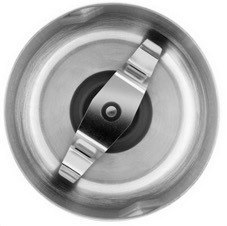
Steel blade grinders are cheap but effective if you aren’t a stickler.
They have whirring knives, which fly around and slice coffee beans in a chamber.
Since blade grinders do not produce the right grind sizes for espresso, it’s preferable to go for burr grinders instead.
Burr Types
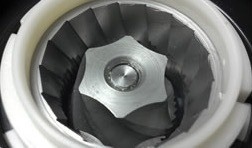
Conical burr set
Burrs can either be conical or flat. Both shapes are available in either ceramic or steel.
Burr grinders enable you to control the fineness of you coffee grounds.
You adjust the grind by moving the burrs closer or away from each other. Fineness of the grind determines the rate of flow of water.
When making espresso, you need a grind that is fine enough.
Can one use the same grind for both a Chemex and a French press?
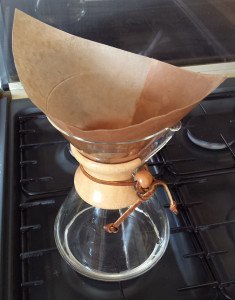
This is a tricky question, but easy to answer nonetheless. It’s not advisable to use the same grind for a Chemex and a French Press.
Rather, the grind for a Chemex should be fine; it should fall between one you would use for a French press and a drip brewer.
Bottom line

Steel burrs are best for manual brewing methods while ceramic burrs are good for espresso.
So, if you don’t make espresso often, you don’t have to worry so much about getting ceramic burrs.
With steel burrs, you’ll get a coarser grind. You might not get consistent results if you swap between drip and espresso, though.
Today, many of the best burrs on commercial grade grinders are ceramic; however, other popular burr grinders use steel.
You see, we are only giving you the facts so you can determine—on your own—what tastes best. Our opinion is, hopefully, fairly unbiased. We hope you are now more knowledgeable in this regard of ceramic vs. steel burrs. 🙂
 |
 |
 |
 |

About Bryan Albuquerque
Bryan Albuquerque is a coffee lover and vaping advocate who writes reviews and information about coffee accessories and KYG. A former coffee addict, Bryan traded his morning fix for an electronic cigarette in an effort to quit smoking, and has never looked back. He's dedicated to helping others make the switch to vaping, and believes that it's one of the best decisions anyone can make for their health.
Thoughts on "Ceramic Vs. Steel Burr Grinders"
 |
 |
 |
 |
Get FREE Coffee Gifts now. Or latest free grinders from our best collections.
Disable Ad block to get all the secrets. Once done, hit any button below
 |
 |
 |
 |
